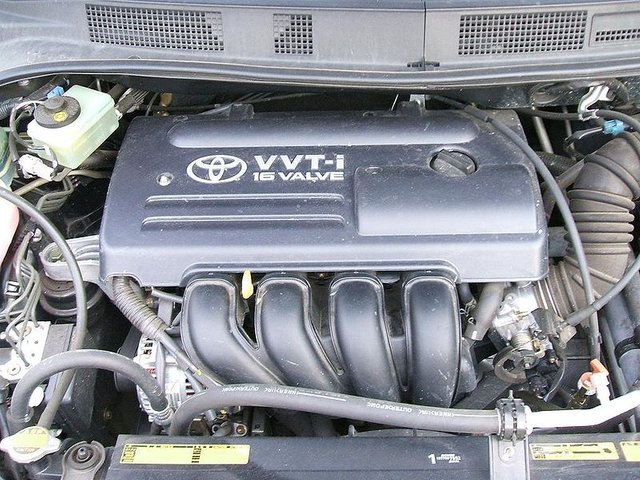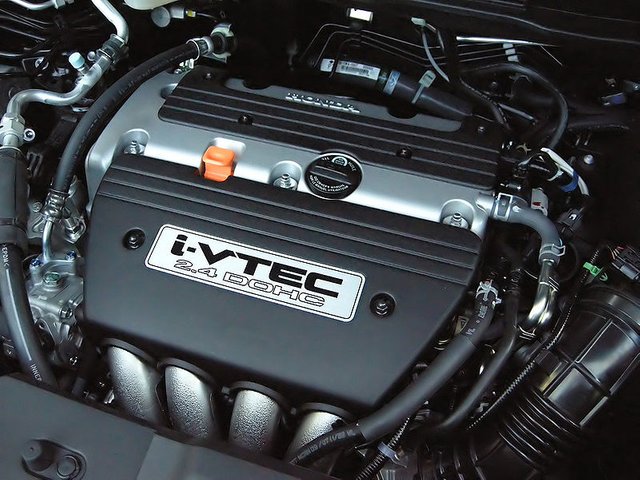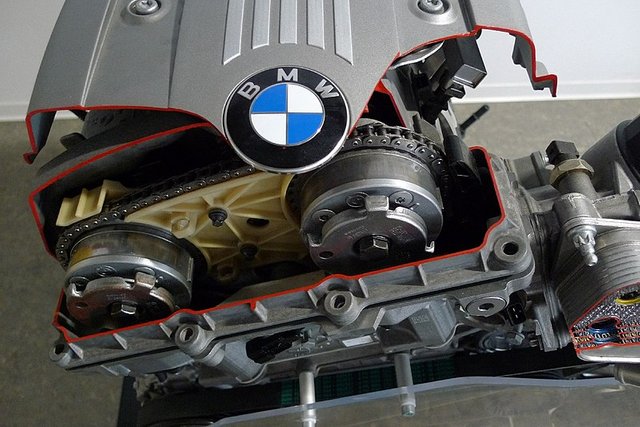A peep further under the hood; Variable Valve Timing - how the engine controls its breathing pace
I have recently realized that I often start my articles by singing the praises of technology and its impact on our lives. Sincerely speaking, technology has helped us do the unimaginable and assisted us in reaching heights of knowledge that we normally wouldn’t. Oh yes, I just sang the praises of technology once again.
Spanning through numerous spheres of life and human endeavor, the impact of technology cannot be unfelt. The automobile industry is not left out in the amazing impacts of technology. From the precise and mind blowing components under the hood to the awesome comfort in the passenger seats, technology has got our back – literarily.
About a week ago, I took a trip into the hood and in the automobile engine. Here I talked about how the operation of opening and closing of valves (which are needed for the intake and exhaust of gases to and from the engine) is done and what is responsible for this – the cam and camshaft mechanism. Today, I would be taking a step further.

Source Wikimedia commons under the Creative Commons Attribution-Share 3.0 License without Adaptation , 2.5 Generic , 2.0 Generic , and 1.0 Generic licenses .
Lets do a little revision.
Recall I mentioned that the camshaft is connected to the crankshaft (not to be confused) via the timing belt or chain and thus the camshaft rotates in sync with the crankshaft? One point to note is that the cam shaft does not rotate the same revolutions as the crankshaft; what I mean is, for the camshaft to rotate once, the crankshaft would have done that twice this is because the valves are needed to open at two points (intake and exhaust) during the 4-strokes of the engine operation.
That being said, with this simple mechanical connection between the cam and crankshaft, the duration of rotation of the cam shaft is constant relative to that of the crankshaft for all speeds. What do I mean? Let’s assume the engine is running at 100rpm, which means the camshaft will be running at 50rpm with the instance of valve opening and closing corresponding to a particular piston position. Increasing the speed of the engine to say, 200rpm would only increase the speed of the camshaft but won’t affect the instance of valve movement relative to the piston position. As a matter of fact, at higher speeds, the valves would be closing as soon as they open.
Getting confusing? Look at it this way.
When walking, your breathing duration i.e. intake and exhaust of gases (I don’t mean the one that comes out from behind lol) is quite regular let’s say 3seconds of breathing in and another 3 for breathing out, now when you increase your pace; say you start jugging, your breathing pace would definitely increase and also, there might would be the need to breathe a lot faster and of course for longer durations i.e. breathing in and out would need to take about 5 seconds instead of 3. Increasing your pace would require you to even adjust your breathing duration, speed and frequency, you might even need to hold your mouth open for a bit longer to allow more air in for a longer duration. Now let’s assume your respiratory system is wired up just like the cam and crankshaft system in the engine, you would agree with me that there would be problems.
This scenario is quite similar to the internal combustion engine too. As the speed increases, there is need to adjust the timing, duration and lift of the valves. Although the engine would perform with the normal mechanical coupling of the cam and crank shafts, a lot of things such as emissions, power delivery, efficiency (with respect to pumping losses), fuel economy and mpg (how far the vehicle will travel on one gallon).
Let me quickly explain some of the terms I mentioned earlier
Valve timing
This refers to the time at which the valve opens (i.e. the camshaft pushes the cam) relative to the position of the piston. The timing of the valve is very important as to the operation of the engine to ensure smooth running.
Valve duration
This on the other hand refers to how long the valve stays open. Recall the example I stated earlier where the change in speed requires a longer time to inhale and exhale, well, this is what it relates to in the internal combustion engine. At some points, the valve would need to stay open for longer or otherwise to satisfy some operating conditions.
Valve lift
Finally, valve lift refers to how the valves open up. What I mean is, sometimes, the valve would need to open completely and sometimes partially. This also depends on the particular operating conditions.
Maybe you have been wondering what exactly today’s discussion is about. Well, wonder no more. I am talking about the Variable Valve Timing technology (VVT)
Oh! You mean that thing that is written on my engine?
In order to improve the performance of automobile engines in terms of emissions, fuel economy, power delivery amongst other things, car manufacturers have adopted the technology known as Variable Valve Timing (VVT) to their engines. Just as the name sounds, the variable valve timing technology is applied to engines to be able to control the lift, duration and timing of the valves to achieve the best performance at whatever speed the engine is running on.
What does the effect look like?
On the surface, it seems that the engine would be fine with a straight up mechanical coupling of the cam and crank shafts but sincerely, it wouldn’t. Let’s take a look at what the effects of changing the timing, lift and/or duration of the valves would look like.
If the intake valve for instance is closed late (i.e. after the suction stroke) this would cause some of the charge to be pumped back into the manifold during the compression stroke and thus, the amount of air in the cylinder is controlled and quite significantly, NOx emmisions (simply put, bad gasses resulting from combustion of fuel) are controlled.
On the other hand, if the intake valve is closed early, pumping losses (losses due to pressure difference between the cylinder and the atmosphere which occur when the engine is running on low rpm) would be reduced because the charge sucked in during the intake stroke would be just enough to power the engine. That way, fuel economy is achieved.
On a third instance, if the intake valve is opened early, this causes some of the exhaust gases to be pumped back into the intake to be re-burnt. That way, the engine itself functions like the EGR which of course reduces emissions and also helps to control the temperature of the combustion chamber.
In the case of the exhaust valve, closing it early results in the reduction of emissions because it traps some of the exhaust gas in the combustion chamber and if it is closed late, it results in the combustion chamber having enough volume to accommodate fresh charge i.e. the exhaust gases are expelled completely.

Honda's VVT is known as VTEC Image source: wikimedia commons public domain
Maybe I have confused you a bit with these instances, let me quickly summarize; the Variable Valve Timing tech is aimed at manipulating the times at which the valves open and close in order to achieve the best performance at minimum emissions. Simple and sweet! You might also be thinking; I cant find VVT written on my engine, does that mean my engine is not equipped with the feature? Well, the reason you don’t not see VVT anywhere around your engine is because different auto manufacturers have different name for the feature in their engines. This is also due to the difference in the mechanisms they apply to achieve the results. In Honda vehicles, you would see VTEC or i-VTEC -
the "i" means inteligence (sounds familiar right?), Toyota calls theirs VVT-i and it goes on and on for various manufacturers.
How VVT is done?
Effecting variable valve timing is not the job of the camshaft alone (obviously), the vehicle computer (ECU) monitors the performance of the engine and with the aid of several sensors such as the camshaft position sensor and crankshaft position sensors and other actuators to determine how to adjust the position of the camshaft relative to the position of the piston in the engine. Sincerely, it is quite a complicated mechanism.
Although there are various individual variable valve timing mechanisms available for respective car manufacturers, I would like to highlight two very common ones.
Cam Changing VVT
In this method of varying the valve timing, the camshaft is equipped with two set of cams for each valve. These cams have different profiles and are switched depending on the operating condition (usually the speed). At one range of speed, one cam is used to drive the valves and as soon as the speed climbs over the limit for that cam, the engine switches to the other cam for better performance. Some car manufactures have been able to improve their cam changing tech to accommodate three stages giving room for even better performance at varying speeds.

A BMW engine showing the variator image source: wikimedia commonsunder the Creative Commons Attribution-Share Alike 3.0 Unported license
Cam Phasing VVT
On the other hand, cam phasing VVT employs the use of a device sometimes known as the variator to change the phase angle (simply put, the angle of inclination) of the camshaft relative to the crankshaft. What this means is, depending on the operating conditions, the variator would rotate the camshaft (relative to the crankshaft) through a particular angle so as to effect the opening or closing of the valves early or late.
The mechanisms of VVT do not end here, more complex systems combine cam phasing and cam changing mechanisms to achieve even more precise and smooth operations.
CONCLUSION
Don’t you think it is amazing to know the very complicated mechanisms that are going on under the hood of the automobile? A whole lot of individual and complicated stuff happening at the same time to produce the engine output. Another amazing thing to know is that car manufacturers are still working on the engines to even make them perform better
The introduction of variable valve timing technology have really helped car manufacturers ensure the engine operates optimally irrespective of the speed at which it is running while also reducing fuel consumption and emissions.
So, whether you are driving a Toyota, Honda, Mercedes or even a Ferrari, have it at the back of your mind that although there seem to be differences, your vehicle’s respiratory system is as complex as that of your body.
REFERENCES
How variable valve timing works
Variable Valve Timing
VVT: What Is Variable Valve Timing And How It Really Works?
Variable Valve Timing and its impact on fuel consumption
Variable Valve Timing explained
Benefits of VVT
Variable Valve Timing

A great read. I like the usage of English. Job well done, bro.
Thank you
Congratulations! Your post has been selected as a daily Steemit truffle! It is listed on rank 8 of all contributions awarded today. You can find the TOP DAILY TRUFFLE PICKS HERE.
I upvoted your contribution because to my mind your post is at least 17 SBD worth and should receive 151 votes. It's now up to the lovely Steemit community to make this come true.
I am
TrufflePig, an Artificial Intelligence Bot that helps minnows and content curators using Machine Learning. If you are curious how I select content, you can find an explanation here!Have a nice day and sincerely yours,

TrufflePigWell done @rharphelle! You successfully guessed the match result.
Click on the badge to view your Board of Honor.
Do you want to know your current ranking? Read this post
Do not miss the last post from @steemitboard:
SteemitBoard World Cup Contest - Quarter Finals - Day 1
Do you like the SteemitBoard World Cup Contest?
Vote for @steemitboard as a witness and get one more award!
Well done @rharphelle! You successfully guessed the match result.
Click on the badge to view your Board of Honor.
Do you want to know your current ranking? Read this post
Do not miss the last post from @steemitboard:
SteemitBoard World Cup Contest - Quarter Finals - Day 1
Do you like the SteemitBoard World Cup Contest?
Vote for @steemitboard as a witness and get one more award!
This post has been voted on by the steemstem curation team and voting trail.
There is more to SteemSTEM than just writing posts, check here for some more tips on being a community member. You can also join our discord here to get to know the rest of the community!
Hi @rharphelle!
Your post was upvoted by utopian.io in cooperation with steemstem - supporting knowledge, innovation and technological advancement on the Steem Blockchain.
Contribute to Open Source with utopian.io
Learn how to contribute on our website and join the new open source economy.
Want to chat? Join the Utopian Community on Discord https://discord.gg/h52nFrV